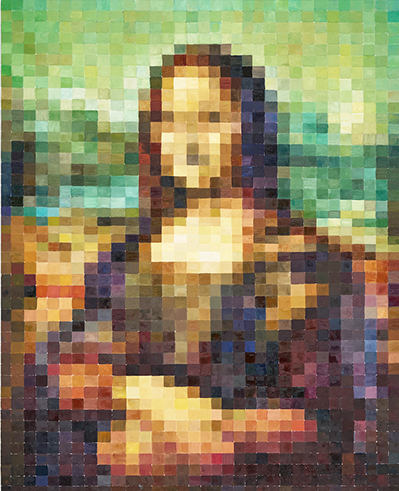'굿 윌 헌팅' 영화감독 거스 반 산트 회화전 '모나리자'
'굿 윌 헌팅' '마이 오운 프라이빗 아이다호' 등을 연출한 영화감독 거스 반 산트(Gus van Sant) 감독이 스위스 모리츠의 비토 슈나벨 갤러리에서 회화전 'GUS VAN SANT: MONA LISA'(12/127-2/19, 2022)을 연다. 거스 반 산트는 켄터키주 루이빌에서 태어나 로드아일랜드디자인스쿨(RISD)에서 영화와 회화를 전공했다.

Gus Van Sant, Mona Lisa #4, 2021, Oil on canvas, 73 x 59 inches, © Gus Van Sant. Photo by Flying Studio
GUS VAN SANT: MONA LISA
DECEMBER 27, 2021 - FEBRUARY 19, 2022
VITO SCHNABEL GALLERY
VIA MAISTRA 37
7500 ST. MORITZ, SWITZERLAND
Vito Schnabel Gallery is pleased to present Gus Van Sant: Mona Lisa, an exhibition of new paintings by the Los Angeles-based artist and acclaimed American filmmaker. Opening December 27, 2021, at the gallery’s St. Moritz space, the exhibition will be Van Sant’s first in Switzerland.
Mona Lisa will debut a series of large-scale canvases, executed in gold leaf, crayon and oil, that take as their subject Leonardo da Vinci’s Renaissance masterpiece created during his second Florentine period– the celebrated, ubiquitous cultural icon Mona Lisa (La Gioconda or La Jaconde), ca. 1503- 1519. An artwork whose own mysterious legend continues to beguile the imagination, Leonardo’s enigmatic portrait is an archetype of beauty that has become ingrained in collective consciousness as an object of widespread veneration. Its hierarchical ranking as the most well-known painting in the world has bestowed upon the work the status of immortality.
In Van Sant’s new paintings, the elusive narrative of Leonardo's Mona Lisa is appropriated and subverted, as the image of a smiling Gioconda is deconstructed through formal experimentation. Van Sant deploys a technique reminiscent of pointillism to render large expanses of color as a series of small blocks exactingly constructed, thereby dissolving the sitter into an obscure grid of broad, tactile brushstrokes and assiduous dots of pastel crayon. The viewer observing at close range becomes enveloped in abstract color and shape, only to discover that Van Sant’s fractured surfaces materialize at a distance into a coherent, legible personage– a smiling woman. Thus the artist’s new Mona Lisa paintings invite meditation on the space that exists between pure optical experience and the realm of imagination in which we fabricate and assign meaning, projecting our dreams and desires onto what we see.
Van Sant is a creative visualist whose proclivity for storytelling is elemental to his modus operandi. The artist’s work in different mediums– including painting, photography, and film– is united by a single overarching interest in portraying the narratives of marginalized individuals and reverence for the dislocated protagonists living on the fringes of society. With the same sensitivity and observational prowess that he lends to his films, Van Sant calls upon the viewer’s sense of perception and proximity in his studio art practice, to engage with the emotional distance and dislocation that shroud the real history of the Mona Lisa. Whether real or imagined, Van Sant gravitates towards the idea of the lost mother; Leonardo fulfilled the request from the Medici family to make a painting for an illegitimate son estranged from his mother, and asked his favored assistant Salai to sit as his subject, his beauty and the artist’s affection for him inspiring Leonardo’s vision of his own unknown mother.
Van Sant’s Mona Lisa works have developed slowly over the course of many years, arising from the artist’s longstanding fascination with digital printing as a means for exploring the myriad minute, layered elements that render the colors we see. Inspired by a LEGO advertisement that translated the Mona Lisa and other renowned paintings into the company’s famous plastic blocks, Van Sant began to isolate and partition hues. The palette of Van Sant’s Mona Lisa paintings ranges from soft, pale pastels to bold, vivacious techno-colors, and even embraces reflective, metallic surfaces of gold, silver, and bronze. Punctuated by heavily worked and expressionistic surfaces, the near imperceptible brushstrokes of Leonardo’s sfumato become in Van Sant’s canvases a landscape of loose, thick smears of paint and layers of built impasto in oil, or the pure hues and regimented marks of crayon. He muses over the curious notion of subject or non-subject, and of the figurative and the abstract, as he questions what it is that one paints. Van Sant’s focus wavers between material, color, and form, while Mona Lisa’s watchful gaze dissolves into the vast pictorial field of his surface.
About the Artist
Gus Van Sant was born in 1952 in Louisville, Kentucky. He received his BFA from the Rhode Island School of Design in Providence in 1975, where he studied painting and film. Admired internationally as a filmmaker, painter, photographer, and musician, his studio painting practice has moved in and out of the foreground of a multi-disciplinary career through the years, becoming a priority again in the last decade.
Van Sant’s work has been the subject of solo exhibitions at the Musée de l’Elysée in Lausanne, Switzerland; Le Case d’Arte in Milan, Italy; and the Jordan Schnitzer Museum of Art at the University of Oregon in Eugene, among others. Vito Schnabel Gallery presented Van Sant’s first solo show in New York in 2019, Recent Paintings, Hollywood Boulevard. A series of Van Sant’s watercolor portraits were presented at Gagosian Gallery in Beverly Hills, California in 2011. Van Sant has participated in numerous group exhibitions since the 1980s, presenting drawings, paintings, photographs, video works, and writing. Among Van Sant’s many internationally acclaimed feature films are Milk (2008); Elephant (2003); Good Will Hunting (1997); My Own Private Idaho (1991); and Drugstore Cowboy (1989). In 2021, Van Sant debuted his first musical theater show, Andy, at the Dona Maria II National Theatre in Lisbon, Portugal. Inspired by the early life of pop art icon Andy Warhol, Andy was featured in the programming of the BoCA Biennial of Contemporary Arts (2021). A European tour of the musical will follow in 2022.
Van Sant lives and works in Los Angeles.







